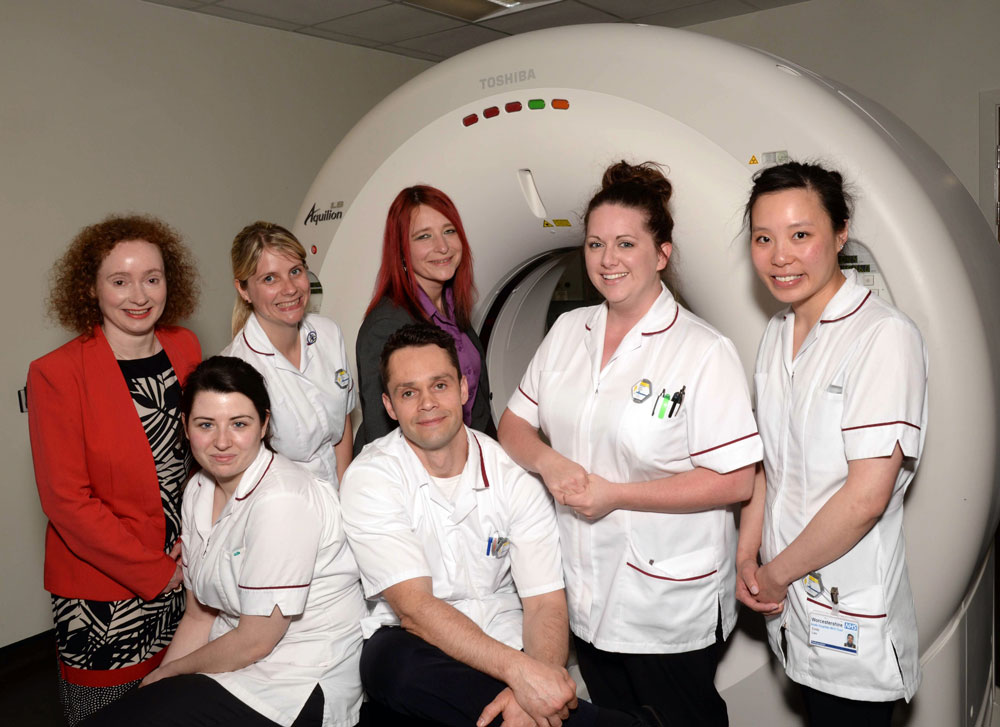The Worcestershire Oncology Centre, a brand new 25 million pound centre for cancer patients in Worcestershire, was recently officially opened by HRH the Princess Royal. Equipped with the latest technology, with all facilities under one roof including the Canon Aquilion LB CT scanner, the new centre means that cancer patients will no longer have to travel to Coventry, Cheltenham or Wolverhampton for treatment. Developed in partnership with University Hospitals Coventry and Warwickshire NHS Trust, hospital bosses estimate the new centre will save one million miles of travel every year.
The Canon Aquilion LB, which has been designed specifically for oncology, has a 90 cm bore for easy patient positioning and maximum flexibility for treatment planning. With the largest bore size on the market, the Aquilion LB removes historic positioning restrictions apparent in standard bore scanners, and its large scan field of 70 cm covers more anatomy with greater accuracy. As the largest true (non-extrapolated) field-of-view, the 70 cm scan field-of-view is accomplished without extrapolation algorithms by the QuantumPLUS detector. This method provides improved image quality across the entire image during bariatric and CT simulation exams. These key advantages of the large aperture and large scan field allow radiotherapy patients to be scanned in their treatment position, using appropriate immobilisation devices.
Jacky Walters, Clinical Lead Radiographer at the Centre says, “The Canon CT scanner offers good image quality and speed of scanning. The radiographers have found it very easy-to-use and the scanner is an asset to the recently-opened Worcestershire Oncology Centre.” Sarah Mcevoy, a Radiotherapy Radiographer at the centre endorses this view with the comment: “The system is very user friendly, easy to set up and the user interface is very intuitive.”
As with all Canon’s CT scanners the new system incorporates a variety of functions that can significantly reduce the patient exposure dose, including AIDR 3D (Adaptive Iterative Dose Reduction in 3D). AIDR 3D can provide a dose reduction in a clinical setting by up to 75 percent when compared to scans performed with traditional Filtered Back Projection (FBP) techniques. The AIDR 3D algorithm is designed to work in both the raw data and reconstruction domains and optimises image quality for each particular body region. It is fully integrated in Canon’s SUREExposure 3D (automatic exposure control software) for optimised dose control, and adds mere seconds to total reconstruction times. In addition, newly designed hardware maximises reconstruction speed in all applications.
Shown here: left to right, Megan Newberry, Account Executive Canon Medical Systems; Helena Mccarthy, Laura Catterall and Dean Carrabin, Radiotherapy Radiographers; Heather Dring, Applications Specialist, Canon Medical Systems; Sarah Mcevoy and Emily Lau, Radiotherapy Radiographers
Canon Medical has a carbon-zero project in place. We have calculated the carbon footprint for each of our products to include manufacturing, shipping, delivery and average hospital energy used for the standard lifetime of the equipment as follows: CT equates to 47 stoves and 48,365 litres of water.
